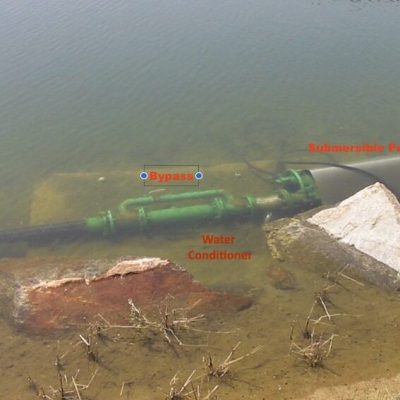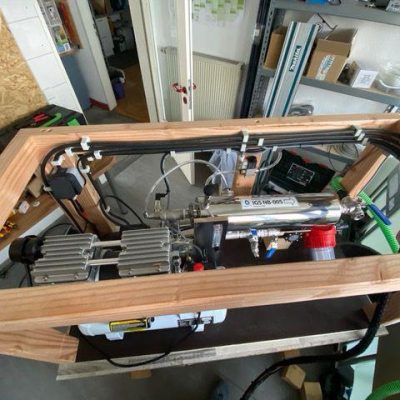A premier golf course in Southeast Asia required an upgrade to its existing water filtration system to enhance water quality and effectively remove suspended contaminants from its irrigation supply. The source water, drawn from a dam, was experiencing several issues including low dissolved oxygen (DO), thermal stratification, and elevated iron levels. These conditions contributed to unpleasant odors and poor water quality across the irrigation system.
Water is transferred from the dam to Tank 1 via an HDPE pipeline, and then to Tank 2 through an interconnecting PVC transfer line. (Refer to attached system diagram.)
The primary objectives of the system upgrade were:
To address these challenges, the golf course implemented an integrated water treatment solution comprising:
This combination has delivered a highly effective and low-maintenance solution, significantly improving water quality and system efficiency for the course’s irrigation operations.




Site Visit Summary & Installation Overview
These photos were taken during our recent visit to a golf course in Korea, where a pond aeration and water conditioning system was installed to improve water quality and aesthetics.
✅ System Design & Installation Highlights:
⚠ Note: This was a contractor-led decision, not specified by IGS Water, but may offer flexibility in high-demand situations.





A leading German company specializing in lake and pond management has successfully implemented the IGS NB-005 Nanobubble Unit—a compact 5 m³/hr core system—at one of their managed ponds.
Following installation, the unit significantly improved water quality parameters, including:
This project showcases the effectiveness of IGS Water’s nanobubble technology in natural water bodies, offering a sustainable solution for water restoration and ecological balance.





101/01 Bang Kruai – Sai Noi Rd, Bang Rak Phatthana,, Bangbuathong, Nonthaburi 11110 Thailand
Suite 86 #24 – 10, Shaw Centre, Singapore 228208
We noticed you're visiting from Germany. We've updated our prices to Euro for your shopping convenience. Use Australian dollar instead. Dismiss